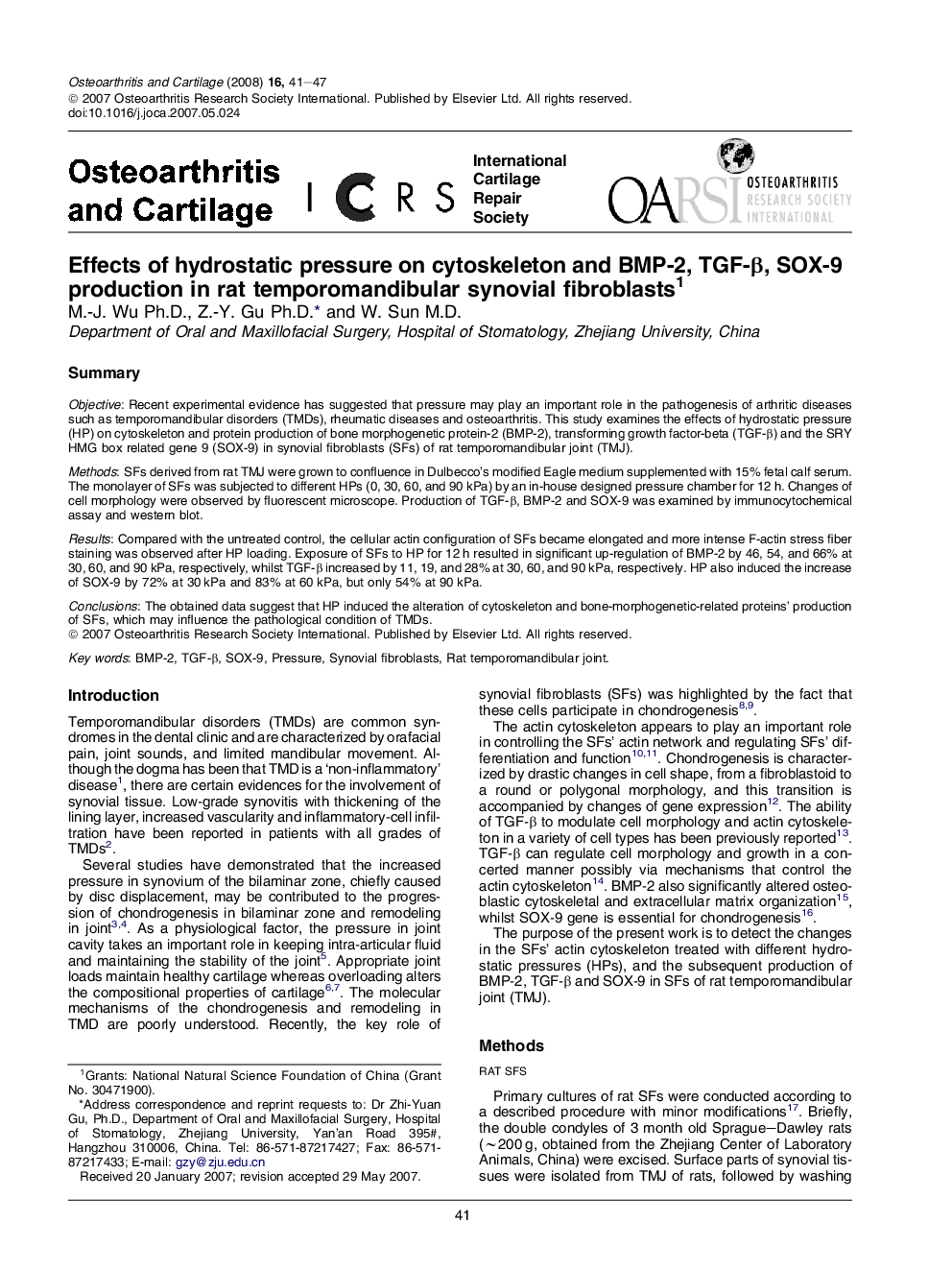| Article ID | Journal | Published Year | Pages | File Type |
|---|---|---|---|---|
| 3381259 | Osteoarthritis and Cartilage | 2008 | 7 Pages |
SummaryObjectiveRecent experimental evidence has suggested that pressure may play an important role in the pathogenesis of arthritic diseases such as temporomandibular disorders (TMDs), rheumatic diseases and osteoarthritis. This study examines the effects of hydrostatic pressure (HP) on cytoskeleton and protein production of bone morphogenetic protein-2 (BMP-2), transforming growth factor-beta (TGF-β) and the SRY HMG box related gene 9 (SOX-9) in synovial fibroblasts (SFs) of rat temporomandibular joint (TMJ).MethodsSFs derived from rat TMJ were grown to confluence in Dulbecco's modified Eagle medium supplemented with 15% fetal calf serum. The monolayer of SFs was subjected to different HPs (0, 30, 60, and 90 kPa) by an in-house designed pressure chamber for 12 h. Changes of cell morphology were observed by fluorescent microscope. Production of TGF-β, BMP-2 and SOX-9 was examined by immunocytochemical assay and western blot.ResultsCompared with the untreated control, the cellular actin configuration of SFs became elongated and more intense F-actin stress fiber staining was observed after HP loading. Exposure of SFs to HP for 12 h resulted in significant up-regulation of BMP-2 by 46, 54, and 66% at 30, 60, and 90 kPa, respectively, whilst TGF-β increased by 11, 19, and 28% at 30, 60, and 90 kPa, respectively. HP also induced the increase of SOX-9 by 72% at 30 kPa and 83% at 60 kPa, but only 54% at 90 kPa.ConclusionsThe obtained data suggest that HP induced the alteration of cytoskeleton and bone-morphogenetic-related proteins' production of SFs, which may influence the pathological condition of TMDs.
